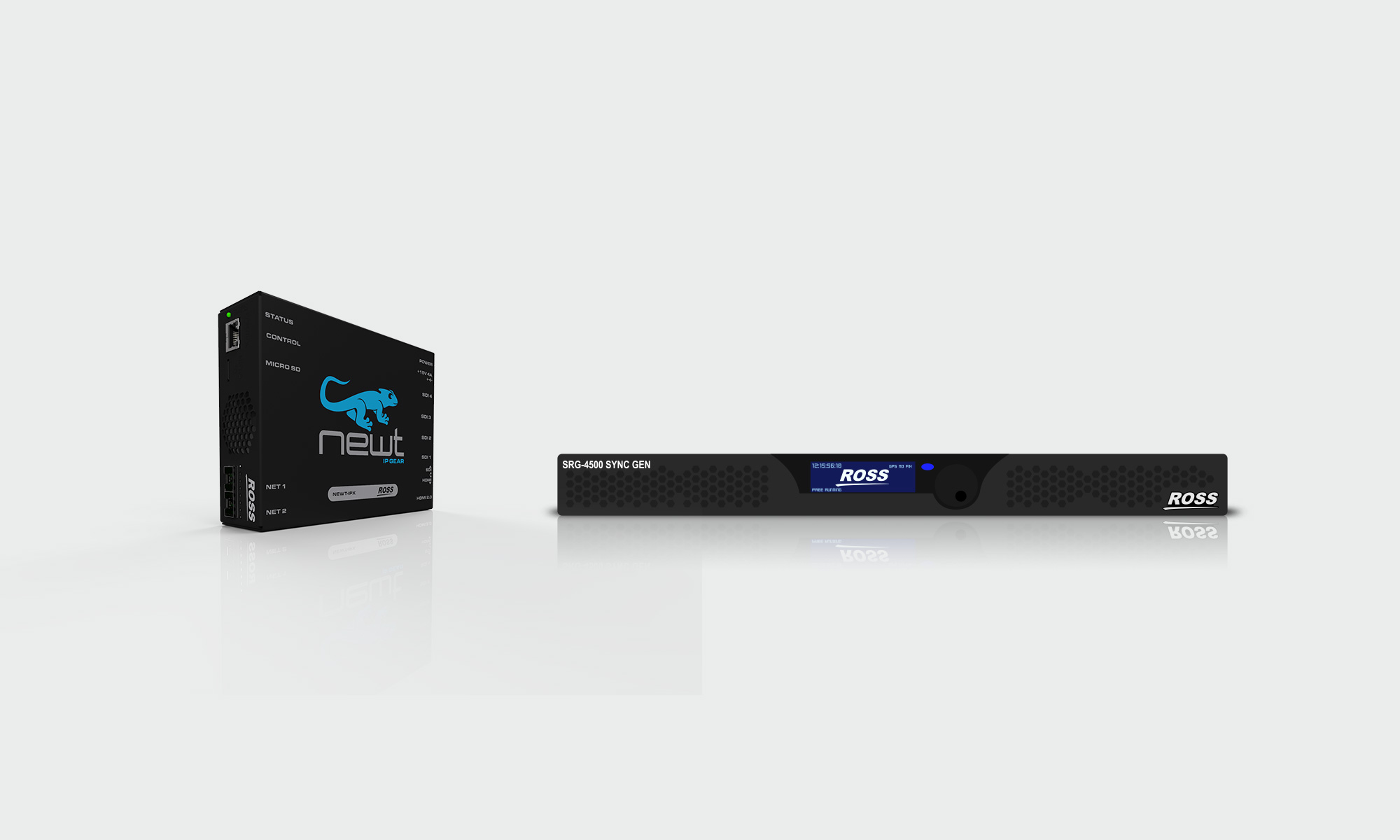
OTTAWA, Canada—Ross Video has unveiled updates to its portfolio of signal processing solutions with the release of Newt V4.0 and an upgrade to the SRG-4500 reference generator.
Newt is a compact UHD-over-IP SDI / HDMI converter. It adapts to the industry’s rapidly changing IP environments, bridging Quad-SDI and HDMI 2.0 interfaces to JT-NM tested SMPTE ST 2110 media streams. Newt is fluent in the NMOS, EmBER+ and DashBoard open standards protocols, offering the freedom to be used in various IP environments.
New for 2021 is that addition of SSM, NMOS and diagnostics to help networks running trouble-free. With its small form factor, low power usage and low cost-per-stream, Newt is a “set and forget” problem solver, the company said.
“These enhancements make it easier for Newt to fit into a wider variety of network environments,” said Alun Fryer, manager, product marketing and solutions at Ross.
Ross also has added support for Precision Time Protocol (PTP) to its SRG-4500 master sync generator. The sync generator can support all of the reference timing and test signals needed in today’s complex broadcast facility. The new PTP software upgrade option brings drop-down configuration support for ST 2110 and AES67 profiles to build IP or hybrid SDI network. PTP support is available as a software option that can be installed in the field. No new hardware is required.
“An important thing to note about IP facilities is that almost all still have some baseband equipment and are in need of traditional timing signals like black burst,” added Fryer. “This is where the SRG-4500 excels; it provides both IP and baseband signals and ensures that both these domains are locked and in phase, which is crucial in system design.”
Both updates are now available.
The professional video industry's #1 source for news, trends and product and tech information. Sign up below.
More information is available on the company’s website.
Phil Kurz is a contributing editor to TV Tech. He has written about TV and video technology for more than 30 years and served as editor of three leading industry magazines. He earned a Bachelor of Journalism and a Master’s Degree in Journalism from the University of Missouri-Columbia School of Journalism.

